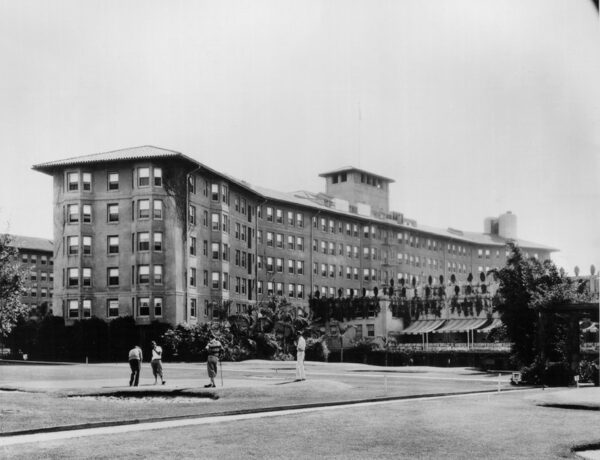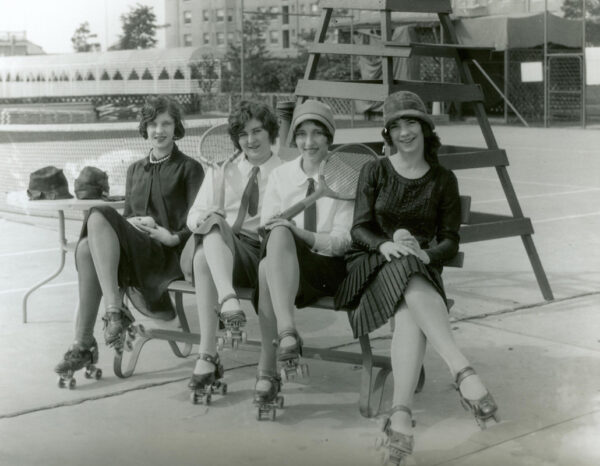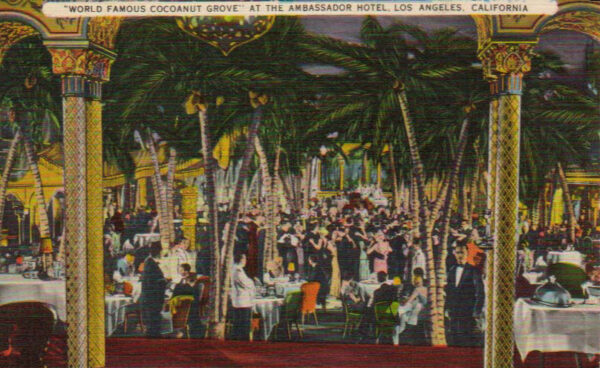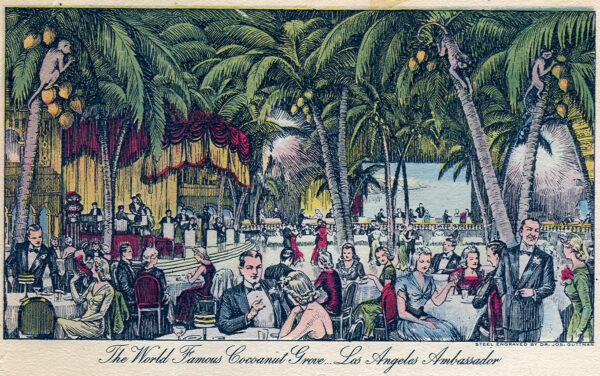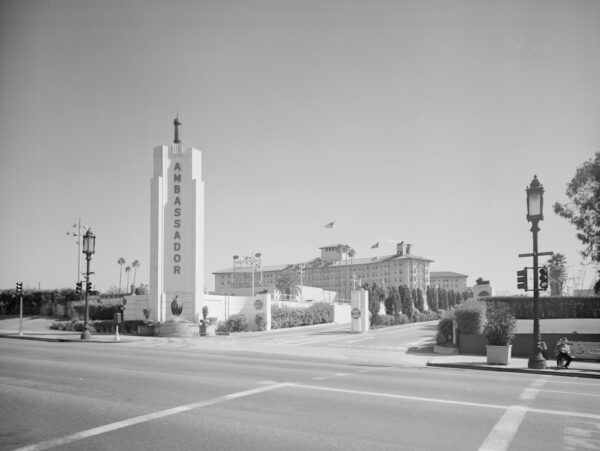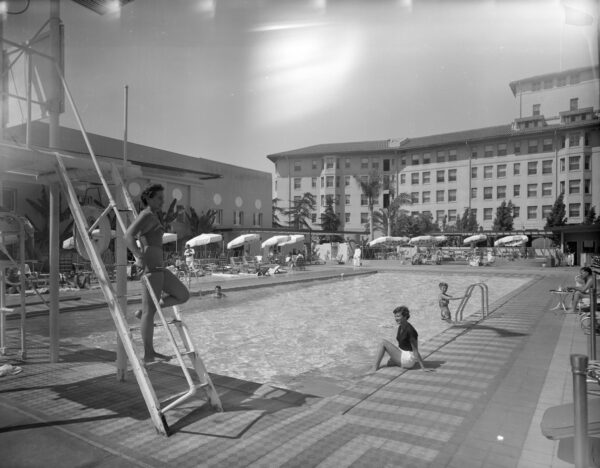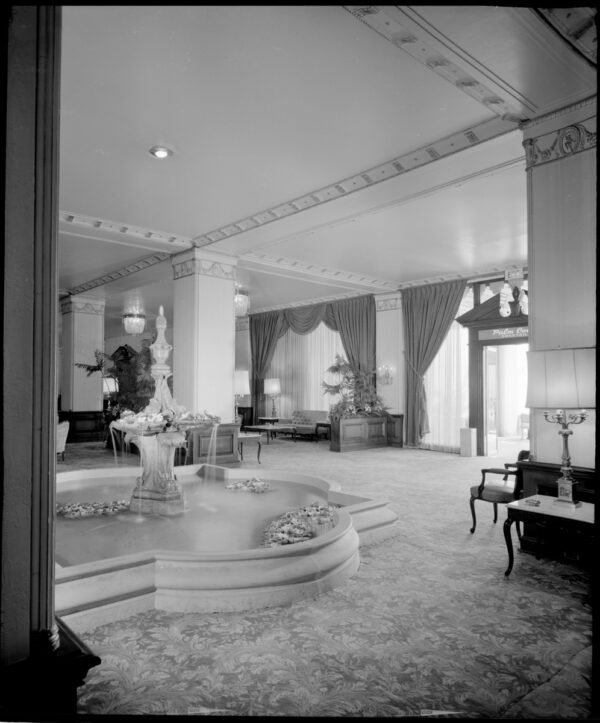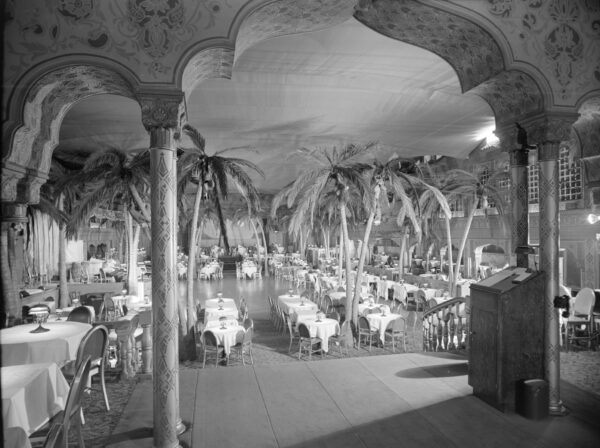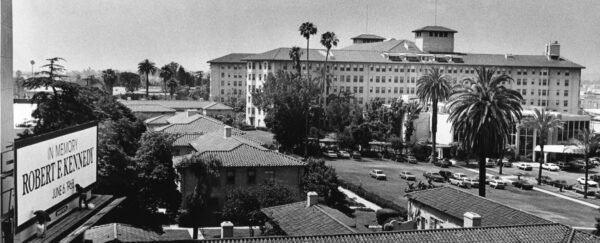
Place
Ambassador Hotel (Demolished)
One of Los Angeles' defining historic sites, the Ambassador fueled development of Wilshire Boulevard and housed the world-famous Cocoanut Grove.
Lost
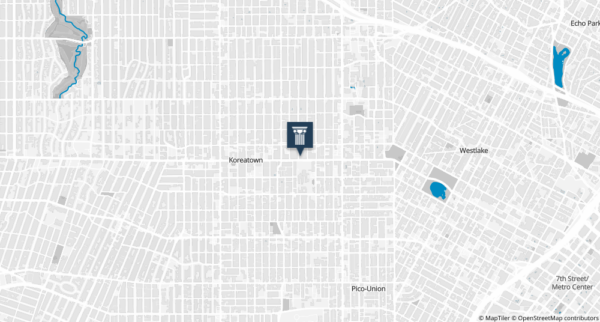
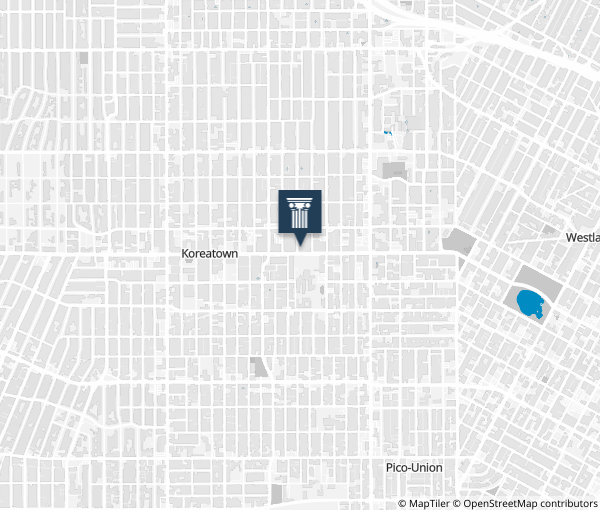
Place Details
Address
Architects
Year
Designation
Property Type
Government Officials
Community

Photo courtesy Marc Wanamaker
Overview
The Ambassador Hotel was one of Los Angeles’ defining historic sites. It told the story of early development of Wilshire Boulevard, master architects Myron Hunt and Paul R. Williams, and innumerable cultural and political events — from the Oscars to the assassination of Robert F. Kennedy. — that defined the twentieth century.
For almost two decades the Conservancy worked with numerous preservation organizations to try and preserve the hotel as part of L.A. Unified School District’s plan to build a new school on the site. Unfortunately, LAUSD demolished the building in 2005.
About This Place
About This Place
Designed in 1921 by master architect Myron Hunt, the building catalyzed development along Wilshire Boulevard, which prior to the Ambassador has been a dirt road. In 1949, the building gained another layer of significance when Paul R. Williams was commissioned to renovate the historic hotel.
The building was home to the Cocoanut Grove nightclub, Los Angeles’ premier night spot for celebrities and entertainers for much of the twentieth century. It also hosted six Oscar ceremonies and every U.S. President from Herbert Hoover to Richard Nixon. In 1968, it was the site of the tragic assassination of Robert F. Kennedy.
Our Position
The Conservancy consistently advocated for a win-win solution that would have preserved this historic building and allowed for a new and community services to be constructed. Unfortunately, our proposals were rejected by LAUSD, and the final project did not include any meaningful preservation.
Despite our best efforts, press accounts included a fair amount of misinformation about the preservation of the Ambassador and the Conservancy’s involvement. Please click read more for our full comments.
1. We wanted a school on the site. In many cases, the issue is still being framed as a choice between historic preservation and the use of the site as a much-needed school. To the contrary, it wasn’t an “either-or” situation. We strongly advocated adapting the hotel building for use as a school, which we think would have provided kids with an even better learning environment by allowing them to touch history as they learned it. When the Los Angeles Unified School District (LAUSD) rejected our plan for using the hotel building as a school, we returned with a new plan that would have built small learning communities around the hotel building, adapting the building instead for use as affordable housing and community services. That plan was also rejected outright.
2. The new campus is not historic. Make no mistake: there is no meaningful preservation on the site. The porte cochere and one wall of the Cocoanut Grove were retained; the rest is replicated. The campus interprets the site’s history but does not preserve it.
3. Preservation did not cause cost overruns or schedule delays. We were very mindful of the need to provide a school as soon as possible, which was one of the reasons we chose not to pursue further litigation when it became clear we wouldn’t prevail. Nor was the approved plan part of a compromise between LAUSD and preservationists. We didn’t compromise on the Ambassador Hotel; we lost. Whatever “preservation measures” LAUSD undertook were entirely self-imposed and did not amount to actual preservation.

